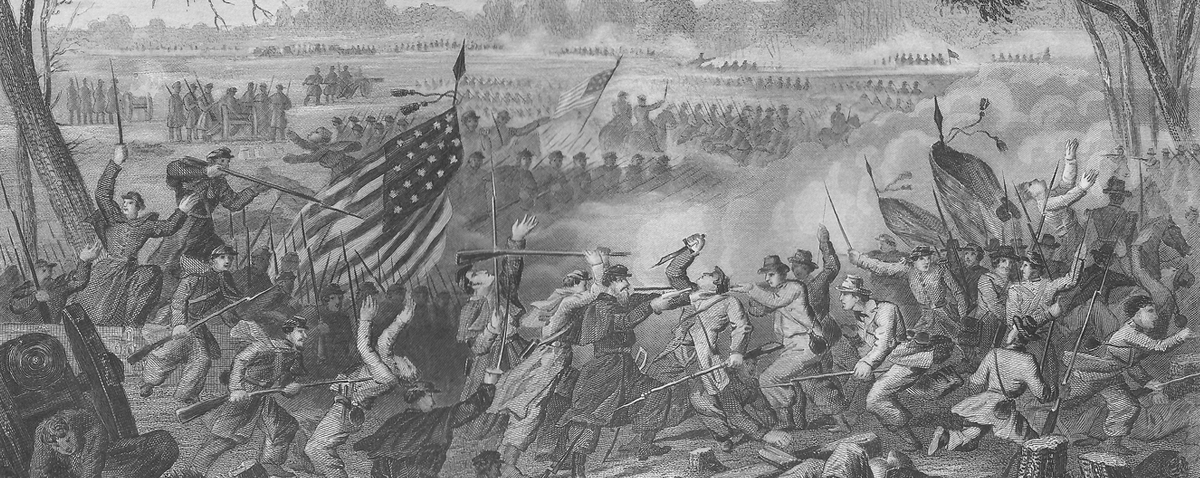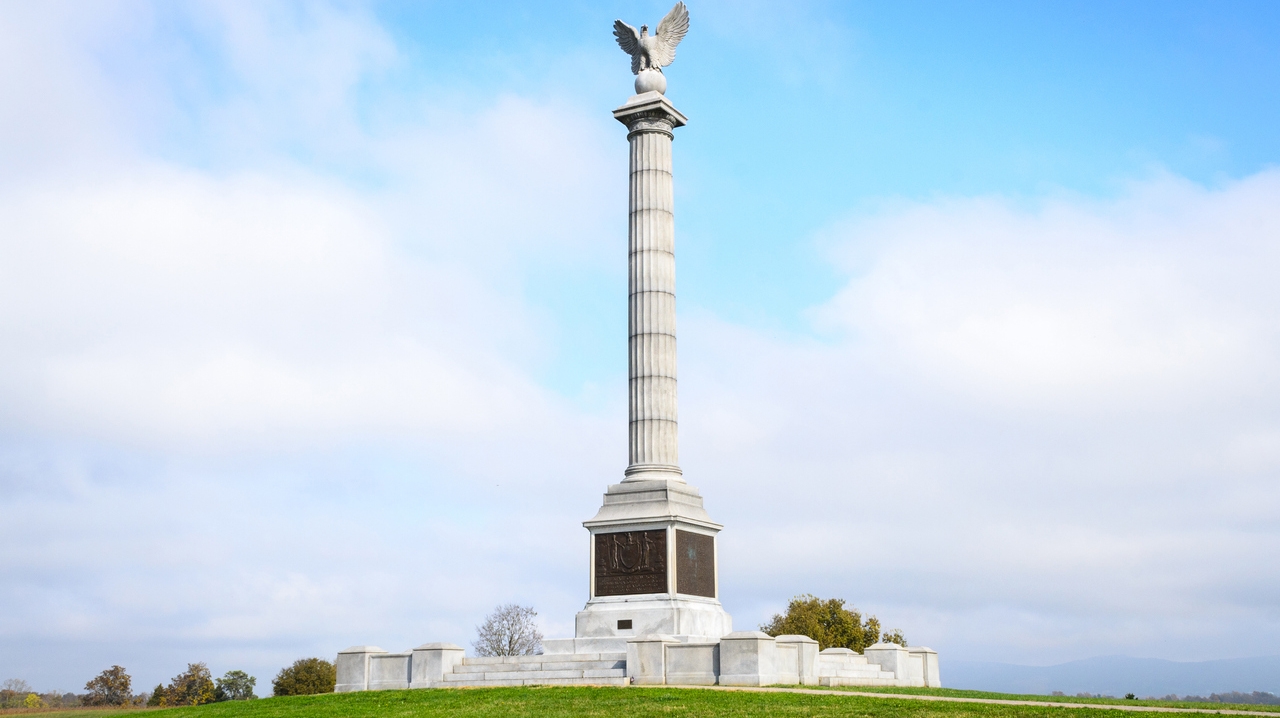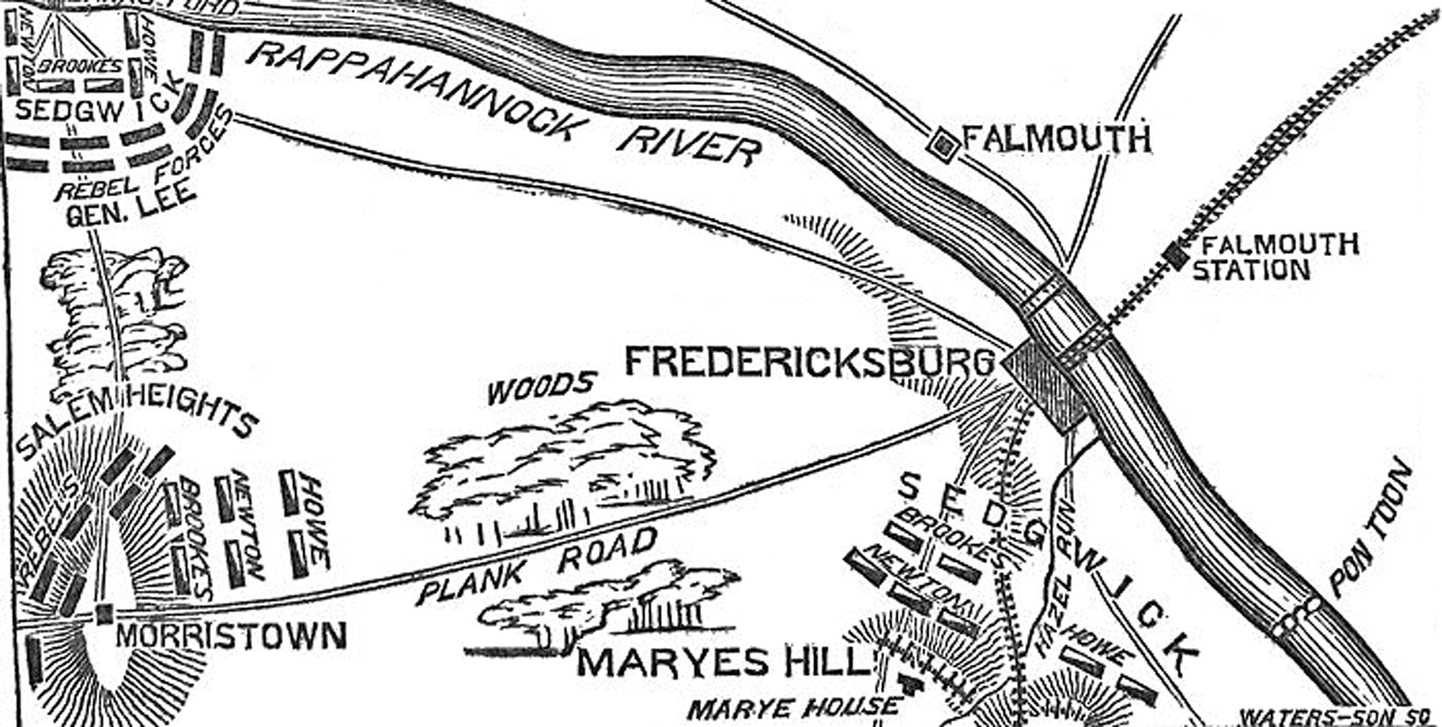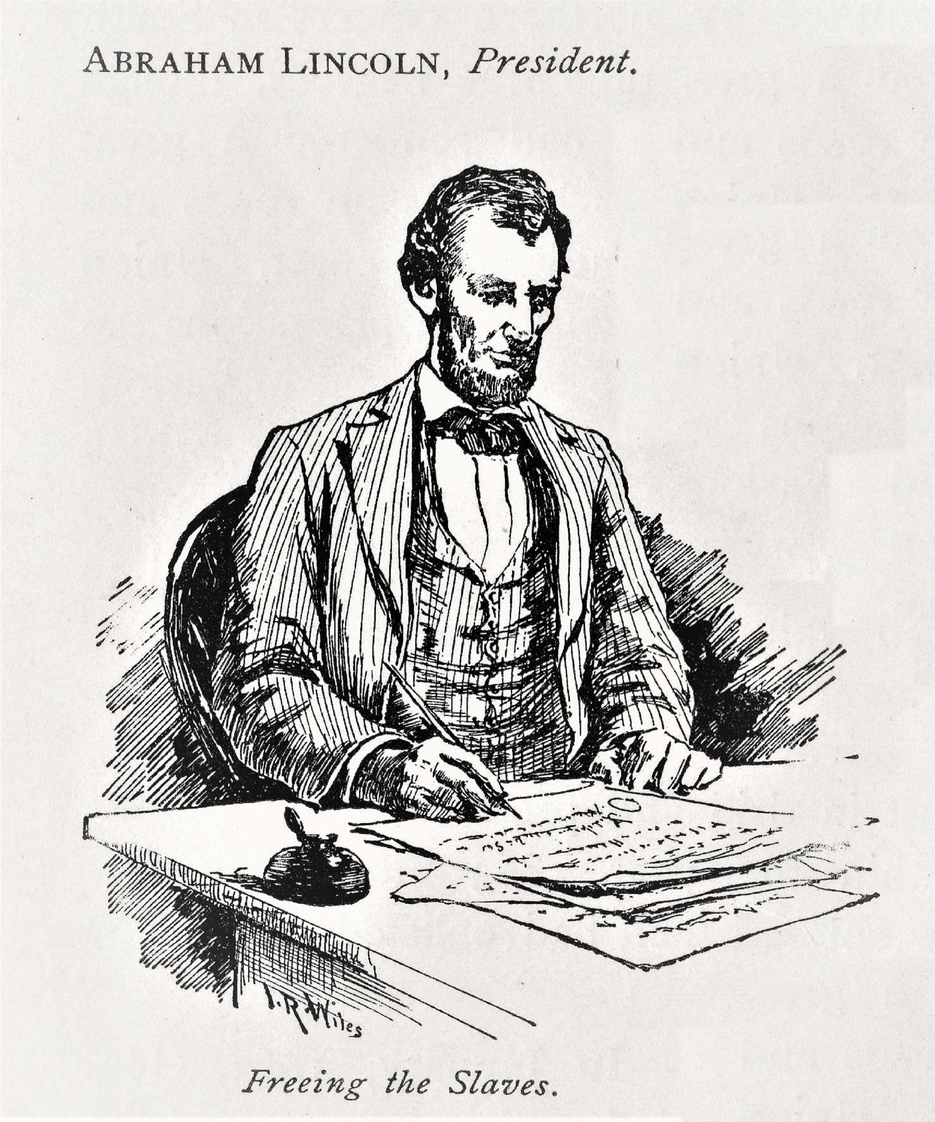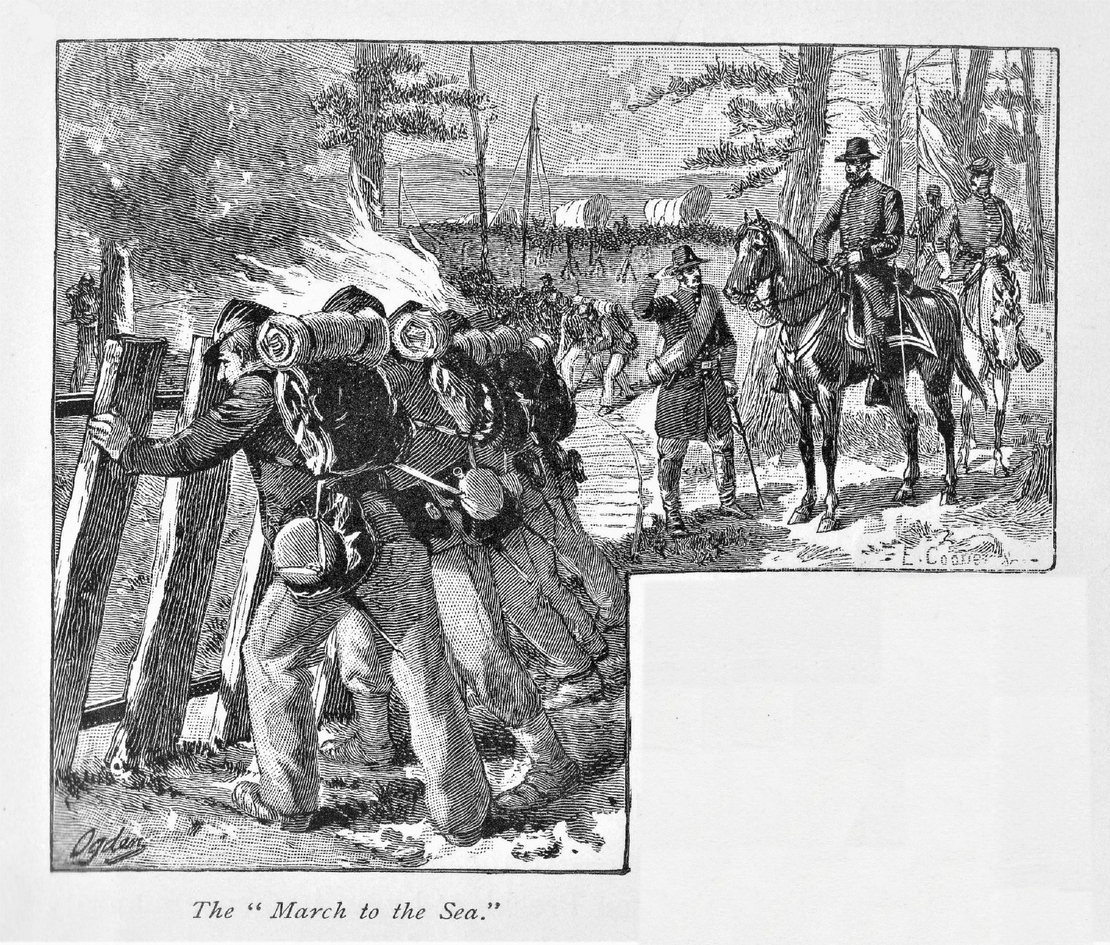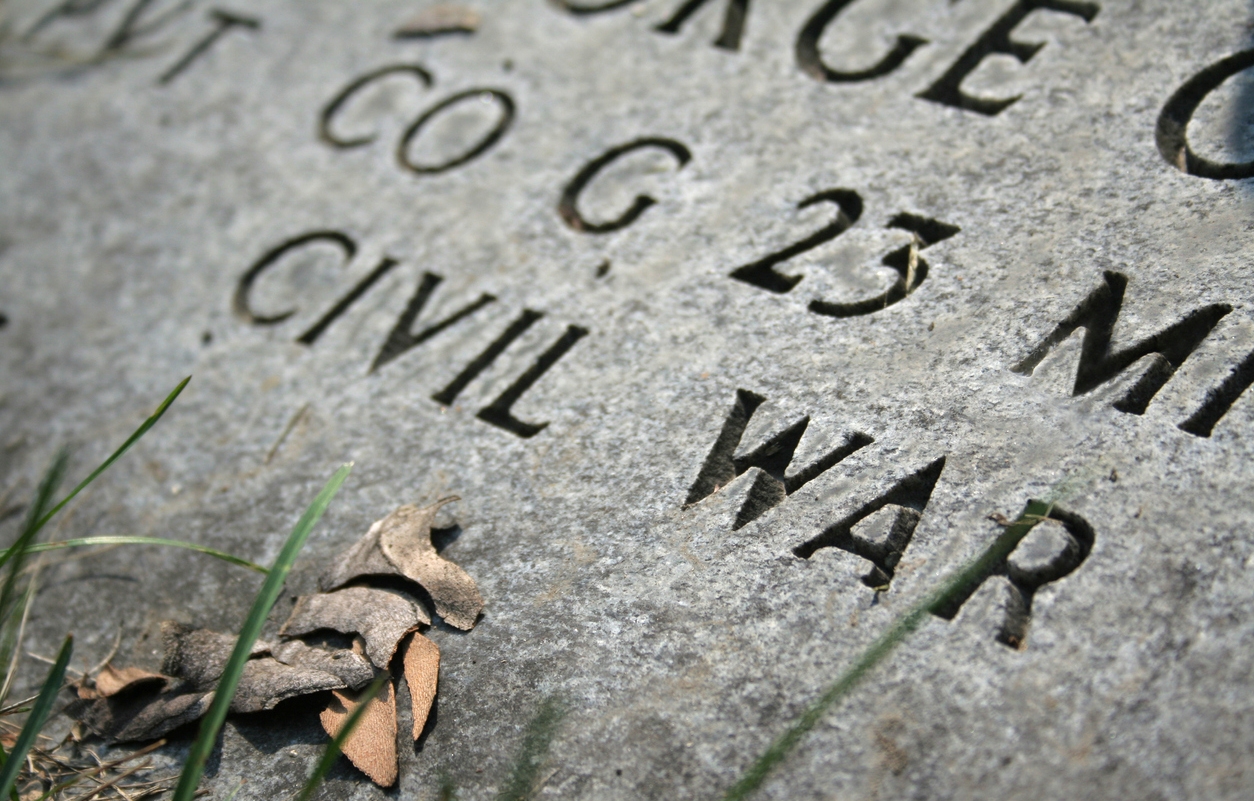Background
In America’s historical awareness, the Civil War is a fundamental event. While the American Revolution created the United States, the Civil War determined the kind of nation it would be. This war was able to resolve two important questions that were left unanswered by the revolution. One was whether the United States was to be a dissolvable confederation of sovereign states or an indivisible nation with a sovereign national government. The other one was whether the nation, born of a declaration that all men were made with an equal right to freedom, would remain the largest slaveholding country in the world. [1]
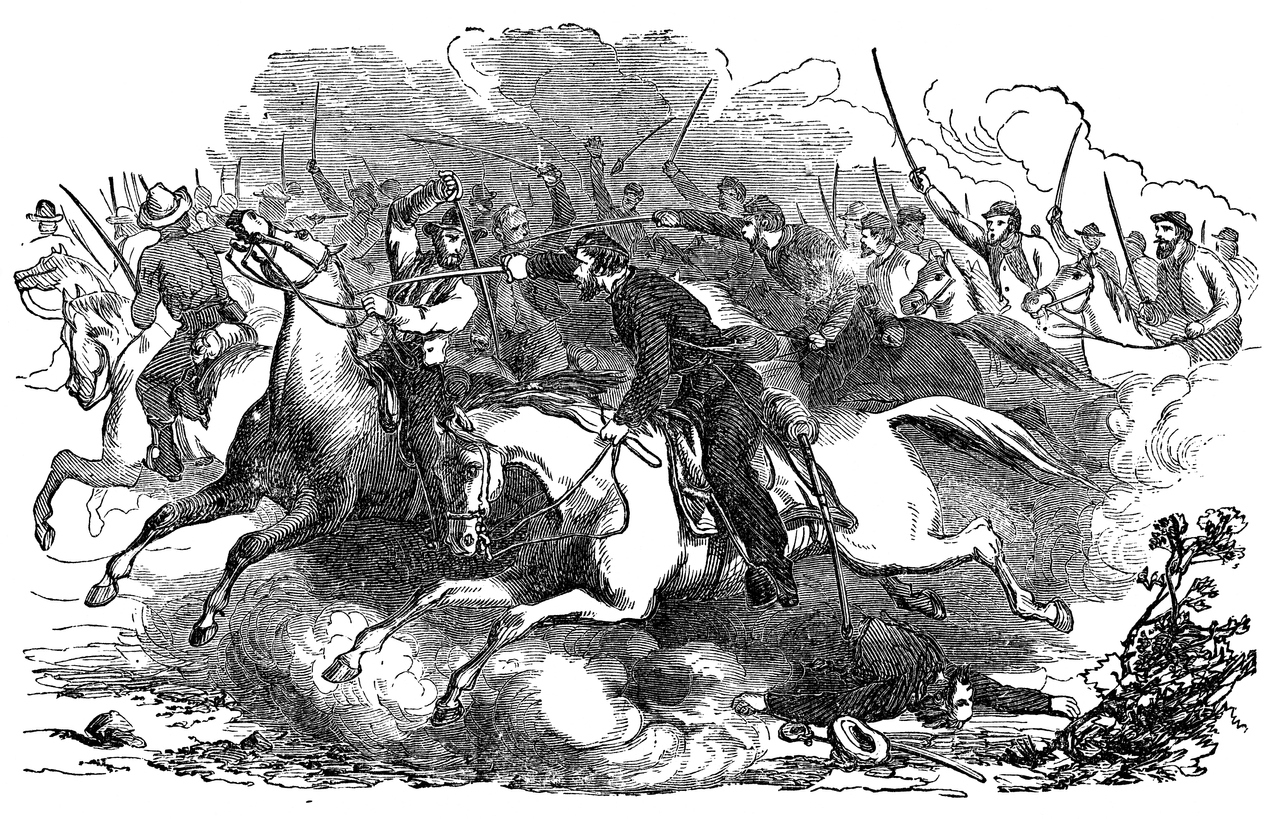
an illustration of a battle between the Union and the Confederate Army
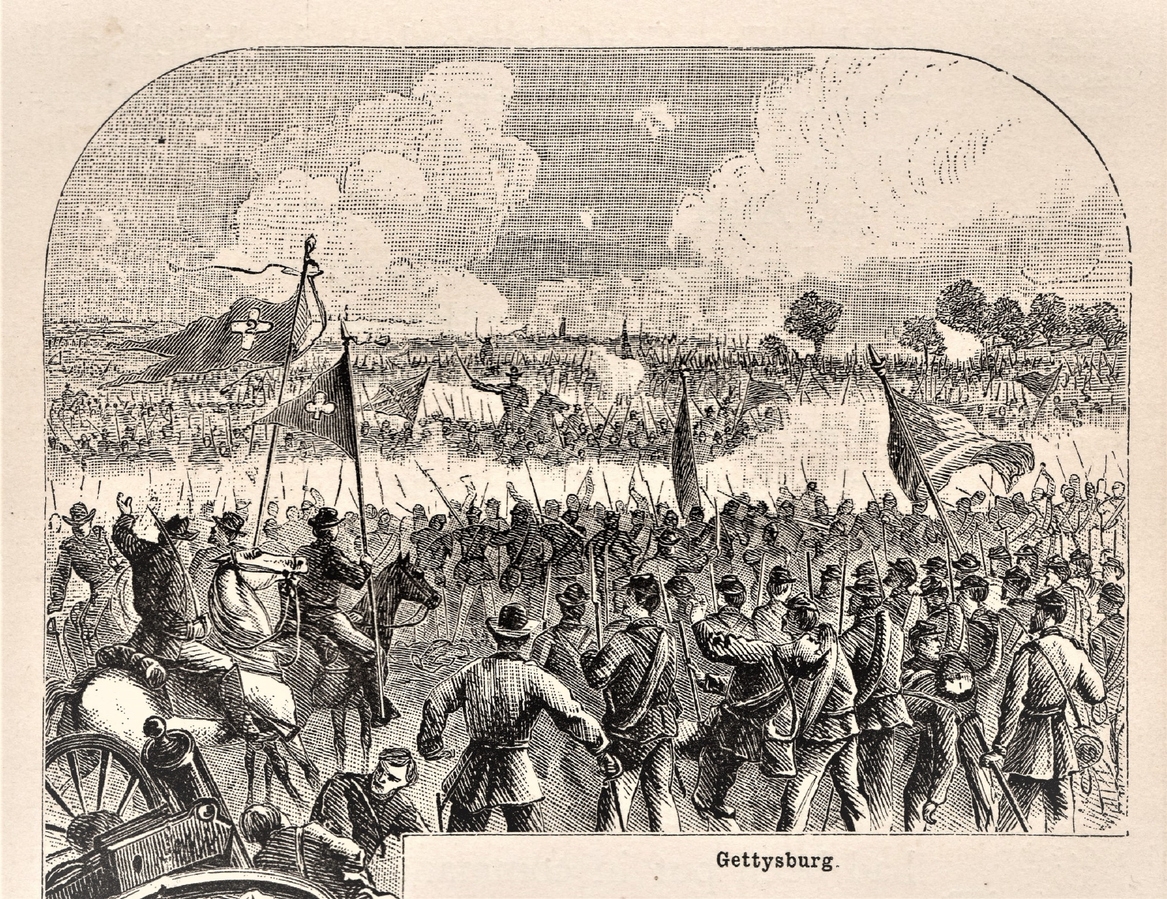
the American Civil War at Gettysburg
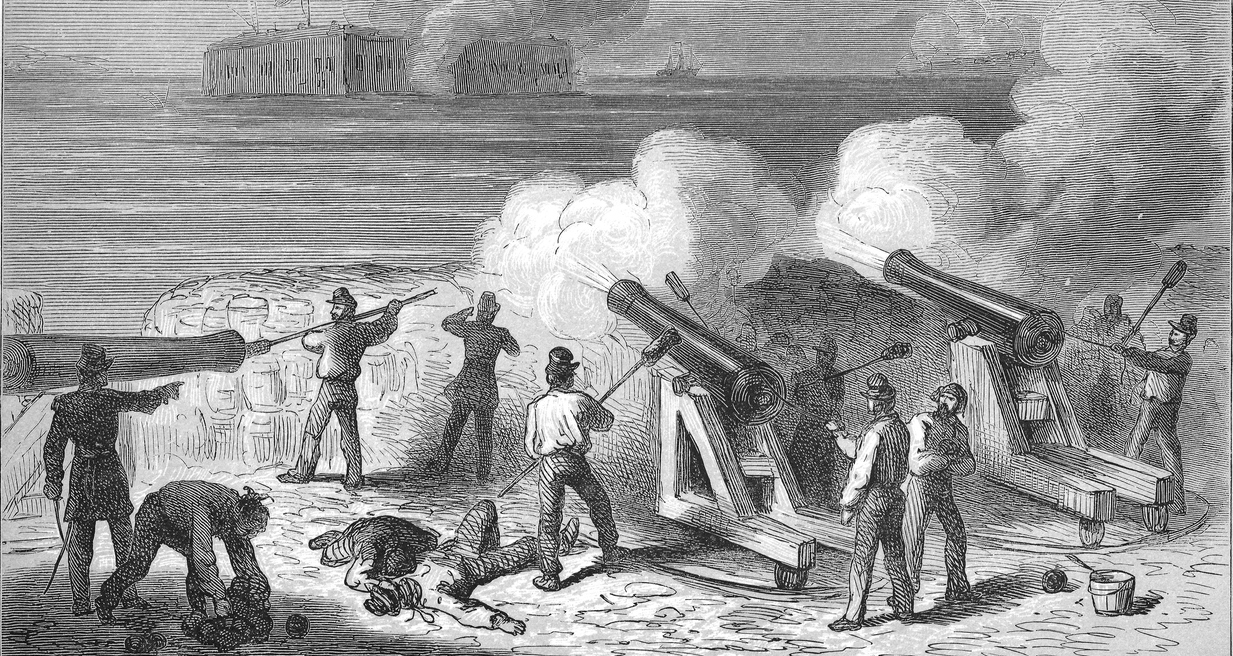
illustration of the Attack on Fort Sumter
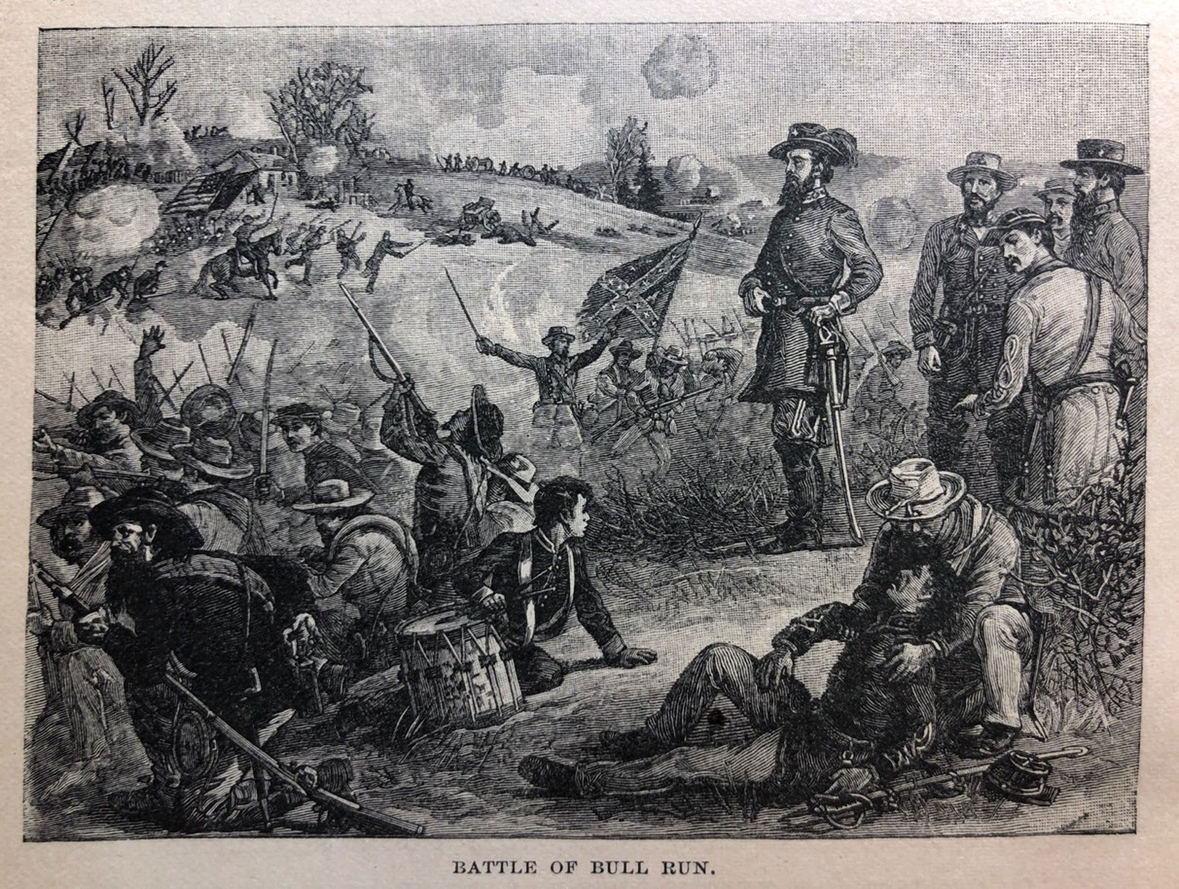
illustration of the Battle of Bull Run
If you are looking to learn more about this key event in the history of the United States, you’re in the right place. In this post, we are giving you a timeline of the Civil War, including its causes, key events, and some interesting facts that you need to know.
Prelude to War
The secession of the Southern states, such as South Carolina, Mississippi, Florida, Alabama, Georgia, Louisiana, Texas, Virginia, Arkansas, Tennessee, and North Carolina, from 1860 to 1861 and the succeeding outbreak of armed aggressions was the peak of decades of growing sectional resistance over slavery. From 1815 to 1861, the economy of the Northern states was quickly modernizing and diversifying.
Even though agriculture, in which most smaller farms relied on free labor, remained the dominant sector in the North, industrialization had taken root there. In addition, Northerners had invested heavily in an expansive and varied transportation system that included canals, railroads, roads, and steamboats, and financial industries like banks and insurance, as well as in a big communications network that featured inexpensive, widely available books, magazines, newspapers, along with the telegraph. [2]
Southern economy, on the other hand, was based mainly on large farms or plantations that produced commercial crops like cotton. These plantations relied on slaves as the main labor force. Instead of investing in factories or railroads like what Northerners did, Southerners chose to invest their money in slaves. In fact, they invested more in slaves than in land. By 1860, 84% of the capital invested in manufacturing was invested in the free or non-slaveholding states. However, to Southerners, as late as 1860, it was a sound business decision.
In the 1850s, the value of slaves, along with the price of cotton, which was the South’s defining crop, had risen steeply. When 1860 came, the per capita wealth of Southern whites was double that of the Northerners. During these times, three-fifths of the wealthiest people in the country were Southerners. [2]
Since the Northwest Ordinance of 1784, the extension of slavery into new territories and states had been an issue. In 1818, when the slave territory of Missouri sought statehood, Congress contested for two years before arriving upon the Missouri Compromise of 1820. This was the first of a succession of political deals that was caused by urgings between pro-slavery and antislavery armies over the expansion of the “peculiar institution,” as it was known in the West.
In 1845, the end of the Mexican-American War and around 500,000 square miles or 1.3 million square km of new ground that the United States acquired as an outcome of it added a new sense of perseverance to the dispute. In the 1850s, more and more Northerners driven by a sense of morality or an interest in protecting free labor came to believe that bondage needed to be eradicated. On the other hand, white Southerners feared that restricting the expansion of slavery would entrust the organization to certain death.
Over the course of the era, the two sides became increasingly divided, and politicians were less able to contain the dispute to compromise. In 1860, when Abraham Lincoln, the candidate of the openly antislavery Republican Party, won the presidential election, seven Southern states, namely South Carolina, Mississippi, Florida, Alabama, Georgia, Louisiana, and Texas, carried out their threat and separated, organizing as the Confederate States of America. [2]
The Start of the Civil War
Even as Abraham Lincoln took office in March 1861, Confederate forces threatened the federal-held Fort Sumter in Charleston, South Carolina. After Lincoln asked a fleet to resupply Sumter, the first shorts of the Civil War were fired by the Confederate artillery. After less than two days of bombardment, Union Major Robert Anderson surrendered, departing the fort in the hands of Confederate forces with the command of Pierre G.T. Beauregard. After this, four more southern states joined the Confederacy, including Arkansas, Virginia, Tennessee, and North Carolina. On the other hand, border slave states, such as Kentucky, Missouri, and Maryland, did not secede. However, there was much Confederate sympathy among their citizens.
Looking at it on the surface, the Civil War may have seemed a lopsided conflict. The Union had 23 states enjoying a huge advantage in population, manufacturing, arms production, and railroad construction. The Confederates, on the other hand, had a strong military tradition, together with some of the best soldiers and commanders in the nation. Aside from that, they had a cause they believed in, which was preserving their long-held traditions and institutions, chief among these being slavery.
The First Battle of Bull Run
The First Battle of Bull Run, which was also known in the South as First Manassas, occurred on July 21, 1861. It involved 35,000 Confederate soldiers led by Thomas Jonathan “Stonewall” Jackson, which forced a greater number of Union forces to retreat towards Washington, D.C., dashing any hopes of a quick Union victory. It led Lincoln to call for 500,000 more recruits. The initial call for troops of both sides had to be widened after it became clear that the war would not be a brief conflict. [3]
The Battle of Shiloh
On April 6 to 7, 1862, the Battle of Shiloh occurred. It was also known as the Battle of Pittsburg Landing. It was the second engagement of the American Civil War that was fought in southwestern Tennessee. This battle resulted in a victory for the North and in large casualties for both sides. [4]
In February, Union General Ulysses S. Grant took Fort Henry on the Tennessee River and Fort Donelson on the Cumberland. The importance of these forts was acknowledged by the Confederates by abandoning their strong position at Columbus, Kentucky, and by leaving Nashville. The next goal of Grant was to attack the Memphis and Charleston Railroad and encamp his troops on Tennessee at Pittsburg Landing.
During that time, General A.S. Johnston, the powerful Confederate forces in the West, and General P.G.T. Beauregard were assembling a force meant to recover their recent losses. Since Union troops were arranging an offensive, they had not reinvigorated their camps. General Johnston, to their surprise, seized the initiative and attacked Grant before reinforcements could arrive.
The Battle of Shiloh was fought in the woods by inexperienced troops on both sides. On the first afternoon, Johnston was mortally wounded. The battle concluded the next day with the Union army doing more than reoccupying the camp it had lost the day before. The Confederates, on the other hand, went back to Corinth, Mississippi. Both sides claimed victory in this battle, but it was a Confederate failure. Both of them were immobilized for the next three weeks due to the heavy casualties of around 10,000 men on each side. [4]
Northern Federals vs. Southern Rebels
The rest of 1862 saw a rising series of fights, which included General George McClellan’s Peninsular Campaign in southeastern Virginia. Both the Southern Rebels and the Northern Federals were suffering heavy losses and not gaining much ground. This led to both sides reexamining their wartime strategies. General Robert E. Lee led the Confederate Army on June 1, 1862. [5]
The Civil War in Virginia
George B. McClellan, the highest commander of the Union Army, was beloved by his troops, but his averseness to advance frustrated Lincoln. In 1862, McClellan led his Army of the Potomac up the peninsula between the York and James Rivers, capturing Yorktown on May 4. The joint forces of Jackson and Robert E. Lee successfully drove back the army of McClellan in the Seven Days Battles from June 25 to July 1.
McClellan called for yet more reinforcements to be able to move against Richmond. However, Lincoln refused and withdrew the Army of the Potomac to Washington. By mid-1862, Henry W. Halleck replaced McClellan as Union general-in-chief, but he stayed in command of the Army of the Potomac. [3]
The Second Battle of Bull Run
Lee led his troops northwards and split them, sending Jackson to meet Pope’s forces near Manassas. Lee himself moved discreetly with the second half of the army. Union troops led by John Pope struck the forces of Jackson on August 29 in the Second Battle of Bull Run or known as the Second Manassas. [3]
The following day, Lee hit the Federal left flank with a massive assault, which drove Pope’s men back to Washington. Lee, on the heels of his victory at Manassas, started the first Confederate invasion of the North. The victory of the Confederate drove the Union army from eastern Virginia and laid the groundwork for the Confederate invasion of Maryland. [6]
The Battle of Antietam
Even though the orders from Lincoln and Halleck were contradictory, McClellan was able to restructure his army and assault Lee on September 14 in Maryland, which drove back the Confederates to a defensive position along Antietam Creek, near Sharpsburg.
The Army of the Potomac attacked the forces of Lee, which was reinforced by Jackson’s, in what became the Battle of Antietam, the bloodiest single day of fighting. This battle was also referred to as the Battle of Sharpsburg. The total casualties numbered 12,410 of around 69,000 troops on the side of the Union and 13,724 of about 52,000 for the Confederates.
The victory of the Union at Antietam would prove decisive because it stopped the Confederate advance in Maryland and forced Lee to retreat into Virginia. The failure of McClellan to pursue his advantage gave him the disdain of Lincoln and Halleck, who removed him from command and replaced him with Ambrose E. Burnside in November 1862. [3]
The Battle of Fredericksburg
Burnside did not want the command, and he unwillingly accepted the promotion. After that, he moved into Virginia on the offensive toward Richmond, which was the Confederate capital. He left Warrenton, Virginia, with a goal to seize a foothold beyond the Rappahannock River near Fredericksburg. When he arrived at Falmouth, located on the north bank of the Rappahannock, he learned that the pontoon bridges that were essential to his operation had not been forward from Washington.
While Burnside sat down to wait for them, Lee, on the other hand, moved into a solid position on the south bank, with his left flank on the river above Fredericksburg and his right flank close to Hamilton’s Crossing, located on the Richmond railway. The Confederates had a strong hold on Marye’s Heights, located above Fredericksburg. On December 10, Burnside, with more than 100,000 Union troops, prepared to cross the river. [7]
On December 13, Burnside assaulted Lee’s troops near Fredericksburg, which ended in heavy Union casualties and a Confederate victory. After that, he was promptly replaced by Joseph “Fighting Joe” Hooker. Both armies then settled into winter quarters across the Rappahannock River from each other. [3]
The Emancipation Proclamation
On New Year’s Day of 1863, Lincoln used the occasion of the Union victory at the Antietam to issue a preliminary Emancipation Proclamation. This proclamation freed all enslaved people in the rebellious states. This decision was justified as a wartime measure, and it did not go so far as to free the confined people in the border states loyal to the Union.
The Emancipation Proclamation disadvantaged the Confederacy of the bulk of its labor forces. It placed international public opinion strongly on the side of the Union. When the war ended in 1865, around 186,000 Black Civil War soldiers had joined the Union Army, while 38,000 lost their lives. [3]
The Northern Tide Turns
At the beginning of 1863, a need for additional forces was seen to replace fallen soldiers on both sides of the Civil War. With this, enlistment acts in both the North and the South made men from the ages of 20 to 45 eligible for mandatory military service. During these times, the end of the war seemed very far away until the Battle of Gettysburg began. [5]
The Battle of Gettysburg
According to historians, the Battle of Gettysburg was the turning point of the Civil War. When General Lee attempted to invade Union territory in Pennsylvania on July 1, the Army of the Potomac, along with General George Meade, was able to hold him off at Gettysburg. The Battle of Gettysburg was also the costliest when it came to human life, as there were over 50,000 men who died in the three-day battle. Abraham Lincoln, on November 19, 1863, would deliver his most famous speech called the Gettysburg Address. Part of the battlefield was dedicated to a national cemetery. [5]
Sherman’s March to the Sea
Lincoln put Grant in the highest command of the Union armies, replacing Halleck. This left William Tecumseh Sherman in control in the West as Grant went to Washington, where he commanded the Army of the Potomac to Lee’s troops in northern Virginia. [3]
The Union had successfully safeguarded the Northern territory. However, the deep South was another question. On September 2, 1864, General Sherman’s troops managed to seize Atlanta, Georgia. This severely impacted the Confederate Army’s access to food, weapons, and other supplies.
On November 15, 1864, Sherman led his 60,000 troops on a nearly 300-mile march to Savannah, which was referred to as “Sherman’s March to the Sea.” It was done to project a threatening presence to the civilians in Georgia. Before Sherman’s troops could reach them, Southern troops fled. By December 21, no soldiers were left to protect Savannah from the forces of Sherman. [5]
By mid-February 1865, Columbia and Charleston, South Carolina, fell to the men of Sherman. Jefferson Davis belatedly handed over the supreme command to Lee, with the Confederate war effort on its last legs. By mid-April, Sherman pressed on through North Carolina, capturing Fayetteville, Bentonville, Goldsboro, and Raleigh. [3]
The Surrender of General Lee and the End of the Civil War
The loss of Georgia and Atlanta proved an insuperable difficulty for the besieged Confederates. On April 2, 1865, Richmond fell to Union forces. With this, General Robert E. Lee surrendered to General Ulysses S. Grant at the Appomattox courthouse on April 9, 1865. But he only surrendered to the Army of Northern Virginia. It took sixteen more months for every commander to surrender their armies and for the Civil War to officially end. [5]
However, five days after General Lee surrendered, the Union lost its great leader. President Lincoln was assassinated by John Wilkes Booth, an actor, and Confederate sympathizer, at Ford’s Theater in Washington on April 14. [3]
On April 26, 1865, Sherman received Johnston’s surrender at Durham Station in North Carolina, which ended the Civil War effectively.
Interesting Facts About the Civil War
If you want to learn more about the Civil War, below are some interesting facts that you need to know:
- The Civil War was a scrimmage between the Northern and the Southern states from 1861 to 1865.
- During the Civil War, Abraham Lincoln was the President of the United States.
- The United States was divided by the issues of slavery and central power.
- Compared to the South, the North had more men and war materials.
- The Battle of Gettysburg in Pennsylvania was the bloodiest battle of the Civil War.
- Until May of 1864, Ulysses S. Grant and Robert E. Lee did not meet on the battlefield.
- The North won the Civil War.
- After the war, the Constitution was amended to free the slaves to assure equal protection under the law for American citizens and to grant black men the right to vote.
- A lot of Civil War battlefields are threatened by development.
- One-third of the soldiers who fought for the Union Army were immigrants, and nearly one in 10 was African American.
- During the Civil War, Harriet Tubman led a raid to free slaves.
- Abraham Lincoln was shot and almost killed around two years before he was assassinated.
- Before William Tecumseh Sherman became a Union general, he was demoted for apparent insanity.
- It was not General Ulysses S. Grant who was the bloodiest general of the war. It was Robert E. Lee.
- The Virginia estate of Robert E. Lee was confiscated by the Union and turned into a cemetery during the war.
- More men died in the Civil War compared to any other American conflict. Two-thirds of the dead perished from disease.
- Black Union soldiers did not accept their salaries for 18 months to protest being paid lower wages than the white soldiers.
- Before and during the Civil War, Abraham Lincoln pushed to send freed slaves abroad.
- The Civil War was fought in over a thousand places in the United States, from southern Pennsylvania to the Florida coast.
- There were more than 10,500 military engagements that occurred during the Civil War, but it is mostly accepted that there were 50 major battles that happened, with about 100 other significant battles.
Conclusion
The Civil War was indeed a moment of reckoning for the United States. After the states were reunited, a period of reconstruction and reconciliation helped the country move forward. We hope this post helped you learn more about the Civil War.
References
[1] McPherson, J. (2021, August 24). A brief overview of the American Civil War. American Battlefield Trust. Retrieved June 24, 2022, from https://www.battlefields.org/learn/articles/brief-overview-american-civil-war
[2] Hassler, W. (2022, April 5). American Civil War. Encyclopædia Britannica. Retrieved June 24, 2022, from https://www.britannica.com/event/American-Civil-War
[3] History.com Editors. (2009, October 15). Civil War. History.com. Retrieved June 24, 2022, from https://www.history.com/topics/american-civil-war/american-civil-war-history
[4] The Editors of Encyclopaedia, B. (2022, March 30). Battle of Shiloh. Encyclopædia Britannica. Retrieved June 24, 2022, from https://www.britannica.com/event/Battle-of-Shiloh
[5] Gunner, J. (2022). Civil War Timeline: Key events in America’s war between states. Examples. Retrieved June 24, 2022, from https://examples.yourdictionary.com/civil-war-timeline-key-events-americas-war-between-states
[6] The Editors of Encyclopaedia, B. (2021, August 22). Second battle of bull run. Encyclopædia Britannica. Retrieved June 24, 2022, from https://www.britannica.com/event/Second-Battle-of-Bull-Run-1862
[7] Lohnes, K. (2021, December 6). Battle of Fredericksburg. Encyclopædia Britannica. Retrieved June 24, 2022, from https://www.britannica.com/event/Battle-of-Fredericksburg
[8] American Battlefield Trust. (2021, April 22). 10 facts: What everyone should know about the Civil War. American Battlefield Trust. Retrieved June 24, 2022, from https://www.battlefields.org/learn/articles/10-facts-what-everyone-should-know-about-civil-war
[9] Dennisgaffney. (2011, May 10). 10 surprising Civil War Facts. History.com. Retrieved June 24, 2022, from https://www.history.com/news/10-surprising-civil-war-facts

